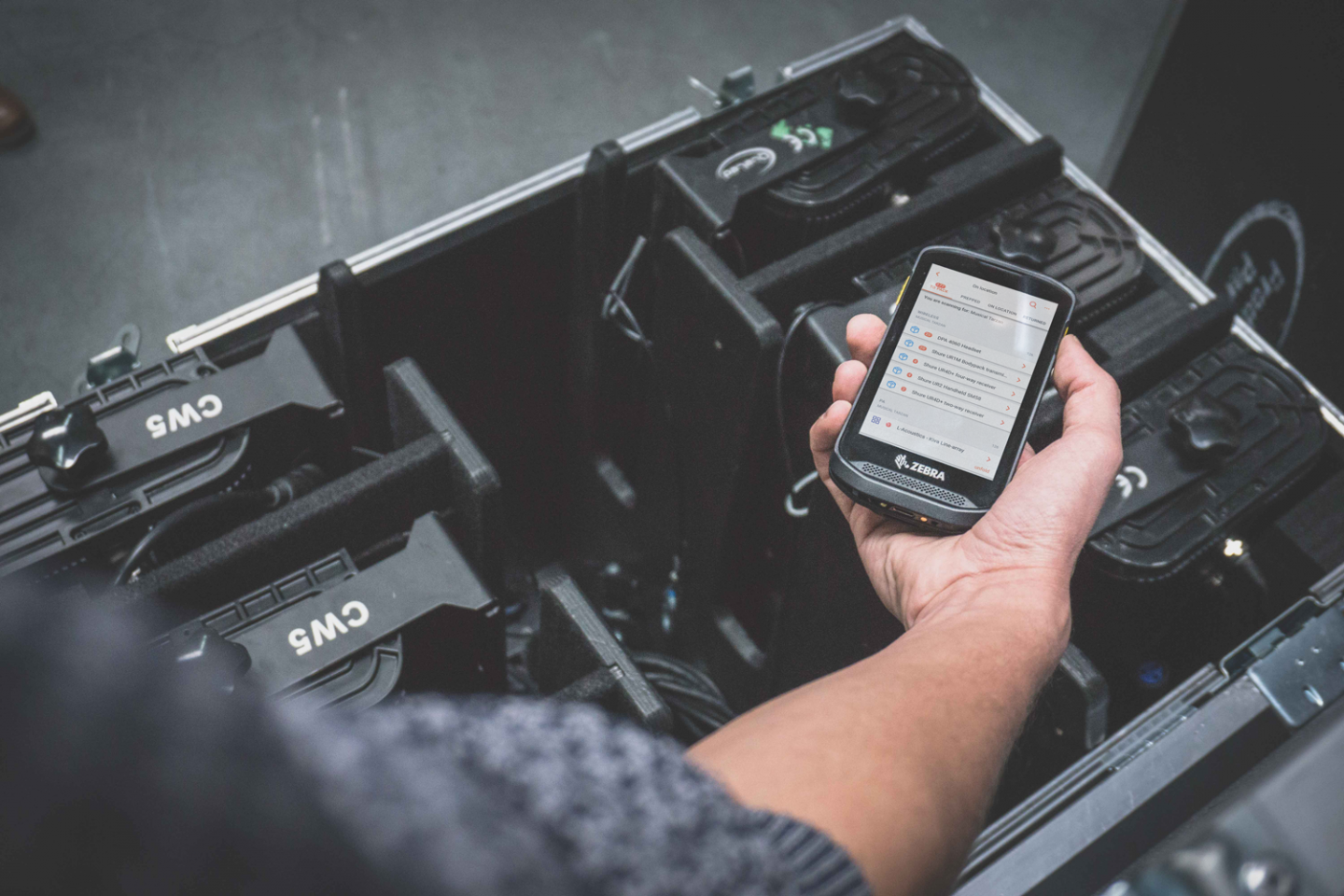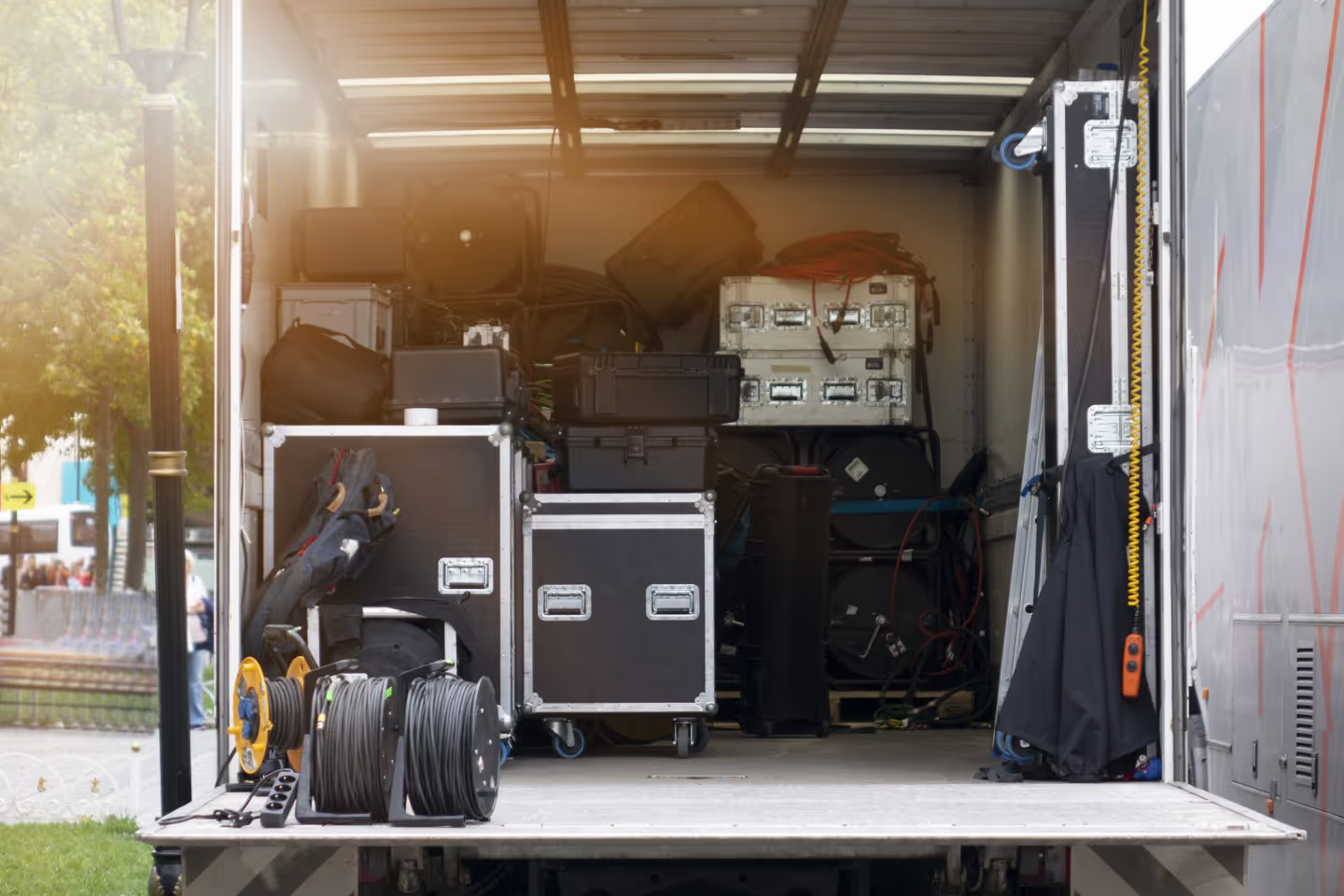Barcode Tracking System

A barcode tracking system is an essential tool for managing inventory, asset tracking, streamlining operations, and enhancing accuracy in various industries. Businesses can efficiently monitor the movement of goods tracking equipment stock levels, and reducing human error through barcode asset tracking. This technology is not only cost-effective but also easy to implement, making it accessible for businesses of all sizes.
In this article, we will delve into the workings of barcode tracking systems, their benefits, and how they can be integrated into different business environments. Explore how this practical solution can revolutionize your event and media production operations.
1. Introduction to Barcode Tracking
2. How Barcode Tracking Works
3. Benefits of Using Barcode Systems in Inventory Management
4. Implementing a Barcode Asset Tracking System
5. Common Challenges and Solutions
Introduction to Barcode Tracking
What is Barcode Tracking?
Barcode tracking is a method used to track equipment. You manage and monitor the movement and storage of items using barcodes. Barcode asset tracking systems consist of barcode tags, readers, and software, and they utilize either 1D or 2D barcodes to track assets.
Each item is assigned a unique barcode, which is then scanned using a barcode reader or scanner. This process captures essential information about the item, such as its location, quantity, and status. The collected data is automatically entered into a centralized system, enabling real-time tracking and inventory management without manual input.
Barcode tracking systems are widely used in various industries, including retail, healthcare, and manufacturing, due to their efficiency and accuracy. By reducing human error and speeding up operations, barcode tracking provides a reliable way to keep track of stock, minimize losses, and ensure that products are always available when needed.
History of Barcode Systems
The concept of barcodes dates back to the early 1950s when Norman Joseph Woodland and Bernard Silver patented the first barcode system. Initially, barcodes were circular and resembled bullseyes, but their design evolved. The first commercial use of barcodes occurred in the 1960s, primarily in the railroad industry to track freight cars. Barcodes significantly improved upon manual asset tracking processes, which were prone to human errors and inefficiencies.
However, it wasn’t until 1974 that barcodes gained widespread recognition as tracking solutions when a pack of Wrigley’s chewing gum became the first product scanned at a supermarket using the Universal Product Code (UPC). This event marked the beginning of barcodes as a staple in retail and other industries. Over the years, barcode technology has continued to advance, incorporating new formats like QR codes and integrating with sophisticated software systems to enhance tracking and inventory management capabilities.
Importance of Barcode Tracking
Barcode tracking plays a crucial role in modern inventory and asset management. By providing a reliable and efficient way to monitor the movement and status of items, it helps businesses maintain accurate stock levels, reducing the risk of overstocking or stockouts. This technology minimizes human error, ensuring data accuracy and saving time that would otherwise be spent on manual record-keeping.
Additionally, barcode tracking enhances operational efficiency by speeding up processes such as receiving, storing, and shipping goods. It also provides valuable insights into inventory trends and patterns, enabling better decision-making and forecasting through accurate asset data. In industries like healthcare, precise tracking of medical supplies and equipment is vital for patient safety and regulatory compliance. Overall, barcode tracking is indispensable for businesses aiming to streamline operations, cut costs, and improve customer satisfaction.
How Barcode Tracking Works
Components of a Barcode System
A barcode system comprises several key components that work together to track and manage inventory. Firstly, there is the barcode itself, a graphical representation of data that can be scanned and interpreted. Barcodes are typically printed on labels and affixed to items. The next component is the barcode scanner or reader, which uses light to capture and decode the information contained in the barcode. This data is then transmitted to a computer or mobile device where specialized tracking solutions process and store it. A barcode tool tracking system enhances this process by providing instant access to relevant data, stock visibility, and the ability to track the journey of tools from purchase to storage.
The asset tracking software component is crucial as it manages the data, provides real-time inventory updates, and generates reports. Many systems integrate with other business applications like ERP (Enterprise Resource Planning) systems for seamless operations. Finally, the printer is another essential part of the system, used to create barcode labels. Together, these components enable efficient tracking and management of assets and inventory.
Types of Barcodes
Barcodes come in various types, each suited to different applications and industries. The most common types are linear barcodes, also known as one-dimensional (1D) barcodes. These consist of a series of parallel lines and spaces of varying widths, such as the Universal Product Code (UPC) used in retail. Another popular type is the Code 39 barcode, often used in non-retail settings like logistics and healthcare.
Two-dimensional (2D) barcodes, such as a QR code and a Data Matrix code, are more advanced. They can store much more information than 1D barcodes, including URLs, text, and even images. QR codes are widely used in marketing and mobile payments due to their versatility and ease of use. Data Matrix codes are common in manufacturing and healthcare for tracking small items and components.
Choosing the right type of barcode depends on the amount of data you need to encode and the specific requirements of your industry or application. Implementing a barcode inventory system can efficiently track and manage tools and inventory in a business, improve tool visibility, reduce losses, and ensure employees are trained to use the system.
Barcode Scanners and Data Collection
Barcode scanning and data collection are pivotal aspects of a barcode tracking system. When a barcode is scanned, the scanner emits a light that reflects off the barcode and back to a sensor. This sensor captures the reflected light and translates it into electrical signals. These signals are then decoded by the scanner’s internal asset tracking software, converting them into data that can be understood by a computer.
Once decoded, the data is transmitted to a centralized asset tracking system, often via a wired or wireless connection. This collected data is processed and stored in a database, providing real-time updates on inventory levels, item locations, and other essential information.
A modern barcode scanner can also integrate with mobile devices, allowing for greater flexibility and on-the-go data collection. This seamless process ensures that the information is accurate and up-to-date, enabling businesses to make informed decisions and maintain efficient operations. Implementing an inventory system that leverages barcode technology can significantly enhance tracking efficiency and overall inventory management.
Benefits of Using Barcode Systems in Inventory Management
Increased Efficiency
One of the most significant benefits of using barcode systems is the marked increase in efficiency they bring to operations. By automating the data collection process, barcodes eliminate the need for manual entry, reducing the time and effort required to track inventory. This automation speeds up tasks such as receiving shipments, updating stock levels, and processing sales, allowing employees to focus on more critical activities. Additionally, barcode systems enable quick and accurate scanning of items, minimizing delays and errors that can occur with manual methods. This efficiency extends to various aspects of the supply chain, from warehousing to shipping, ensuring that goods move smoothly and swiftly through the system. Ultimately, the increased efficiency provided by barcode systems translates to cost savings, improved productivity, and a more streamlined workflow for businesses.
Sortly offers an inventory management solution that enhances these efficiencies by providing features like barcoding, QR coding, low stock alerts, and the ability to update inventory from a smartphone.
Improved Accuracy
Improved accuracy is another critical advantage of barcode systems. Manual data entry is prone to errors, which can lead to significant discrepancies in inventory records. Barcode software solutions mitigate this risk by automating the data capture process. When an item is scanned, the barcode system instantly and accurately records its information, eliminating the possibility of human error. This accuracy ensures that inventory levels are correctly maintained, reducing the likelihood of overstocking or stockouts.
Moreover, the precise data provided by barcode systems helps in tracking products throughout the supply chain, from manufacturing to delivery. This improved traceability is particularly vital in industries like healthcare, where accurate tracking of medical supplies and medications can be a matter of life and death. Overall, the enhanced accuracy offered by barcode systems not only streamlines operations but also builds trust and reliability within the business and with customers.
Cost Savings
Barcode systems offer substantial asset tracking costs savings for businesses by streamlining operations and reducing errors. The initial investment in barcode technology—scanners, printers, and software—quickly pays for itself through increased operational efficiency. Automated data collection eliminates the need for manual entry, reducing labor costs and minimizing the risk of costly mistakes. Accurate inventory tracking ensures optimal stock levels, preventing both overstocking and stockouts, which can tie up capital and lead to lost sales.
Additionally, barcode systems improve asset management, reducing losses and misplacement of items. This efficiency extends to various areas, including shipping and receiving, where faster processing times can lower labor costs and increase throughput. Moreover, the real-time data provided by barcode systems enables better decision-making and more accurate forecasting, further contributing to cost savings. Overall, the adoption of barcode systems can lead to significant financial benefits, making them a wise investment for businesses of all sizes. Implementing a barcode tool tracking system can further enhance these benefits by providing inventory visibility, audit functions, and ease of use, ultimately leading to additional cost savings.
Implementing a Barcode Asset Tracking System
Choosing the Right Equipment
Selecting the right equipment is crucial for the successful implementation of a barcode system. The key components include barcode printers, scanners, and software. When choosing a barcode printer, consider factors such as print volume, label size, and the type of barcode you will be using. Thermal printers are popular for their durability and print quality, making them suitable for various applications. An effective asset tracking system, which includes barcode asset tracking, is essential for optimizing equipment selection and ensuring efficient operations.
Barcode scanners come in different forms, including handheld, fixed-mount, and mobile scanners. Handheld scanners are versatile and easy to use, while fixed-mount scanners are ideal for high-speed scanning in industrial environments. Mobile scanners, often integrated with mobile devices, offer flexibility for on-the-go data collection.
The software component should be compatible with your existing systems and capable of handling your business’s specific needs, such as inventory management or asset tracking. Investing in reliable and scalable equipment ensures that your barcode system operates efficiently and meets your long-term objectives.
Software Integration
Software integration is a vital step in implementing a barcode system. The chosen asset tracking software should seamlessly integrate with your existing business systems, such as ERP (Enterprise Resource Planning), WMS (Warehouse Management System), or POS (Point of Sale) systems. This integration ensures that data captured by barcode scanners is automatically synchronized across different platforms, providing real-time updates and accurate information across the board.
When selecting software, consider its compatibility with your hardware and its ability to scale with your business growth. Look for features that facilitate easy data import/export, custom reporting, and user-friendly interfaces to minimize the learning curve for employees.
Additionally, cloud-based solutions offer the advantage of remote access, enabling you to monitor and manage inventory from anywhere. Effective software integration not only streamlines operations but also enhances data accuracy and decision-making, making it a cornerstone of a successful barcode system implementation.
Training and Support
Training and support are essential components of successfully implementing a barcode system. Proper training ensures that your staff can effectively use the new equipment and software, minimizing disruptions during the transition period. Comprehensive training programs should cover all aspects of the barcode system, from scanning techniques to understanding the software interface.
It’s also important to provide ongoing support to address any issues that may arise. This support can be in the form of helpdesk services, online resources, or on-site assistance. Having a dedicated support team ensures that any technical problems are quickly resolved, maintaining the efficiency and accuracy of your operations.
Moreover, continuous training and updates are necessary as technology evolves and new features are added. Keeping your staff well-informed and proficient in using the barcode system will help your business maximize the benefits of this technology, ensuring long-term success and operational excellence. Transitioning from manual asset tracking processes to automated systems can significantly reduce human errors and improve overall accuracy.
Common Challenges and Solutions
Technical Issues
Technical issues are a common challenge when implementing and maintaining a barcode system. Problems can range from scanner malfunctions to software glitches, which can disrupt operations and affect data accuracy. To mitigate these issues, it’s crucial to invest in high-quality, reliable equipment and ensure regular maintenance. Barcode asset tracking systems, which include barcode tags, readers, and software, also face these technical challenges.
Another common problem is network connectivity, especially if your barcode system relies on wireless communication. Ensure that your network infrastructure is robust and capable of handling the data traffic generated by the barcode system.
Additionally, software bugs or incompatibility with existing systems can cause data synchronization issues. Regular software updates and patches are essential to fix bugs and improve performance. Having a dedicated IT support team or a reliable service provider can help promptly address these technical issues, minimizing downtime and maintaining the efficiency of your barcode tracking system.
Resistance to Change
Resistance to change is a significant challenge when implementing a new barcode system. Employees may be accustomed to existing processes and wary of adopting new technology, fearing it may be complicated or disruptive. To overcome this resistance, it is essential to communicate the benefits of the barcode system clearly, highlighting how it will make their tasks easier and improve overall efficiency. Introducing an inventory system can further enhance these benefits by providing real-time tracking capabilities and improving overall effectiveness.
Involving employees in the implementation process can also foster a sense of ownership and reduce apprehension. Provide comprehensive training and hands-on practice sessions to build confidence in using the new system. Addressing concerns and providing continuous support can further ease the transition.
Additionally, demonstrating quick wins—such as time saved or errors reduced—can help to show the immediate benefits of the new system, encouraging wider acceptance. By taking a thoughtful, inclusive approach, you can mitigate resistance and ensure a smoother implementation of the barcode tracking system.
Maintenance and Upgrades
Maintenance and upgrades are essential for the long-term success of a barcode tracking system, but they can present challenges. Regular maintenance ensures that barcode scanners, printers, and software continue to operate efficiently. This involves routine checks, cleaning, and replacing worn-out parts. Neglecting maintenance can lead to equipment failures and operational disruptions. Additionally, maintaining a barcode inventory system is crucial for efficiently tracking and managing tools and inventory in a business.
Upgrades are equally important to keep the system up-to-date with the latest technological advancements and security patches. However, implementing upgrades can be challenging, particularly if they require system downtime or retraining staff. To minimize disruptions, schedule upgrades during off-peak hours and provide advance notice to your team.
Having a proactive maintenance and upgrade plan can help mitigate these challenges. Partner with reliable vendors who offer ongoing support and timely updates. Training staff on new features and improvements can also ensure a smooth transition whenever an upgrade is necessary. By maintaining and upgrading your barcode system, you ensure its longevity and continued efficiency.
FAQ
Frequently asked questions
No items found.
Previous blog posts

How to Calculate Equipment Rental Price for Events and Media Productions
How to Calculate Equipment Rental Price for Events and Media Productions


